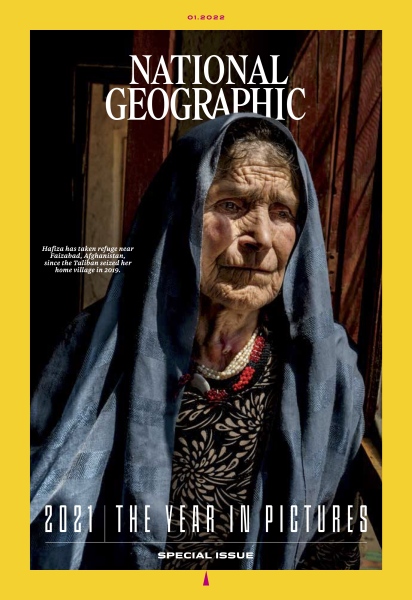
"What the end of the war in Afghanistan means to one mother and her family" for National Geographic Magazine (2022)
https://www.nationalgeographic.com/history/article/what-the-end-of-the-war-in-afghanistan-means-to-one-family
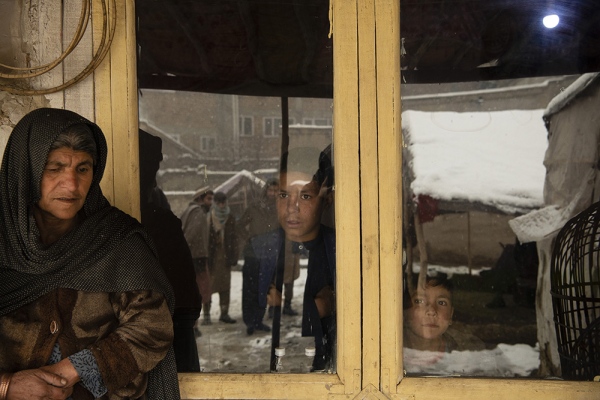
"As Afghanistan's humanitarian crisis deepens, its young people step up" for National Geographic (2022)
While the international community is trying to figure out how to help the Afghan people without benefiting the Taliban, young Afghans, including Amini, realize that they can’t afford to wait for foreign aid to resume at full scale. They grew up during the American occupation with war and hardship, but also with dreams and promises of a better future and more possibilities in life than their parents had.
Seeing that future crumble, they are taking matters into their own hands to help their communities. Some distribute clothes to needy families in northern Badakhshan Province. Others teach underground classes to girls who are out of school in Kabul, the capital. Another group operates an emergency bakery in Bamiyan Province in the central highlands.
https://www.nationalgeographic.com/culture/article/afghanistan-humanitarian-crisis-deepens-young-people-step-up
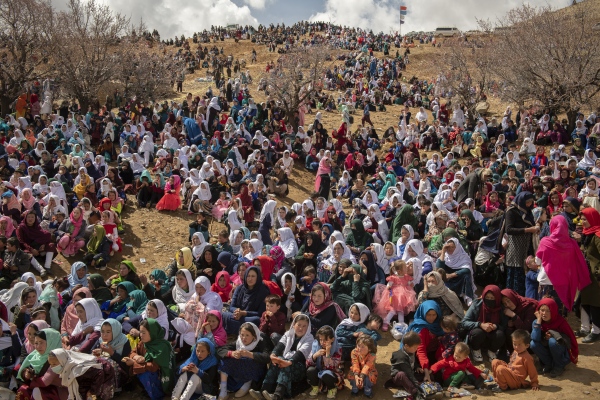
A Love Letter To Afghanistan for National Geographic Magazine (2021)
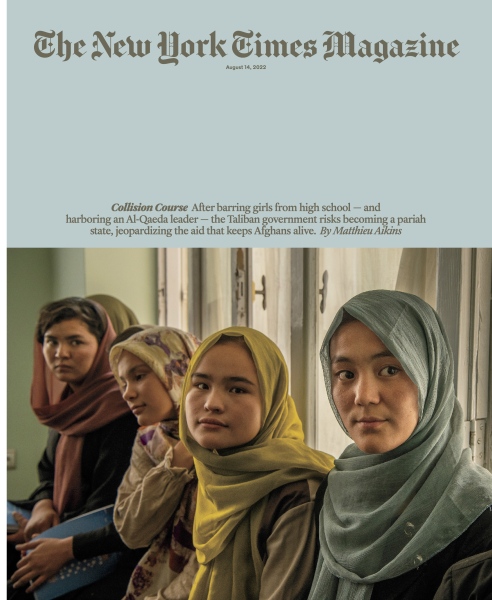
"The Taliban’s Dangerous Collision Course With the West" for The New York Times Magazine (2022)
https://www.nytimes.com/2022/08/08/magazine/taliban-afghanistan.html
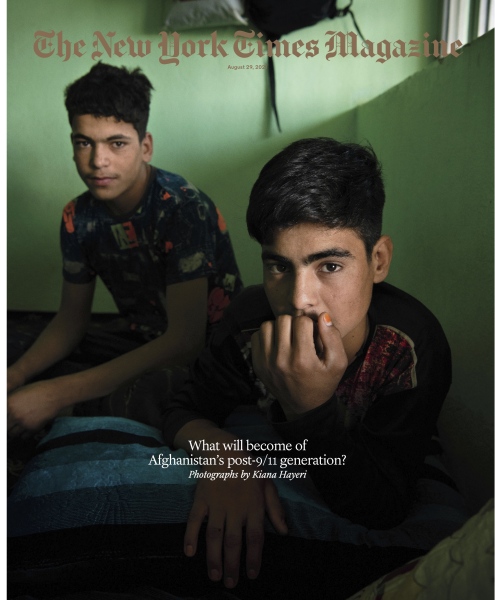
"What Will Become of Afghanistan’s Post-9/11 Generation?" for The New York Times Magazine (2021)
https://www.nytimes.com/2021/08/22/magazine/afghanistan-photos.html
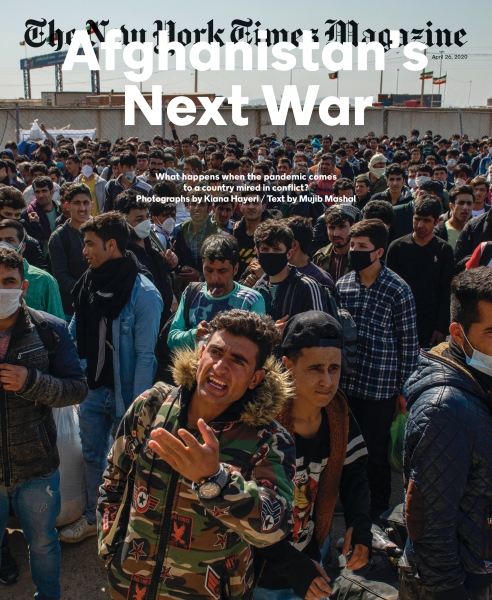
"Afghanistan’s Next War" for The New York Times Magazine (2020)
One Wednesday in March, 11,627 people crossed the Iranian border into the Afghan province of Herat. A sea of young men formed. Some carried backpacks, others large sacks overstuffed with their belongings. One carried a child’s bicycle, another a string instrument. One had just two blankets folded under his arm, another a canary in a cage.Most of the men were Afghans in their 20s. Their search for a better life in Iran had been abruptly thwarted by the coronavirus, returning them to a border that once took them days to cross in the other direction — squeezed into the beds of pickup trucks by smugglers who sped them through deserts at night, leaving some with bruises and others with broken body parts. The least fortunate were left in the desert to rot.Now, as the men waited to be processed back into a war they had tried to escape, health care workers shouting through a megaphone instructed them in how to wash their hands.
https://www.nytimes.com/interactive/2020/04/22/magazine/afghanistan-coronavirus.html
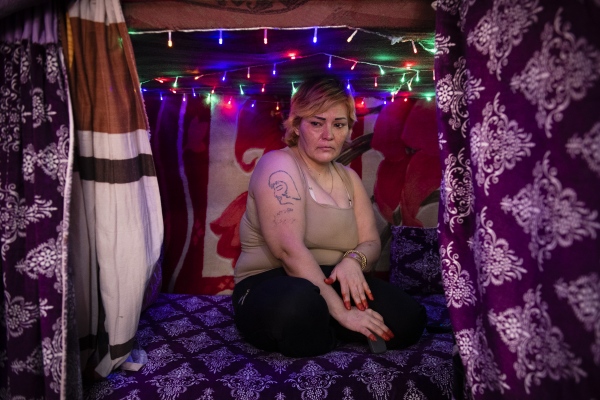
"They Killed Their Husbands. Now in Prison, They Feel Free." for The New York Times Magazine (2020)
This is the story of women who have pushed so far that they saw no other way out of abusive marriages but to murder their husbands. Many did to save their lives and their children lives.
https://www.nytimes.com/2020/02/26/magazine/afghan-women-prison.html
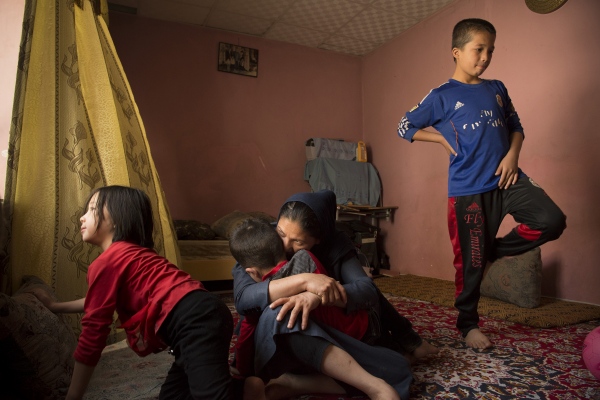
"Single Mothers of Afghanistan" for Harpers Magazine (2016)
https://www.theglobeandmail.com/news/world/mothers-day-single-mothers-afghanistan/article34969069/
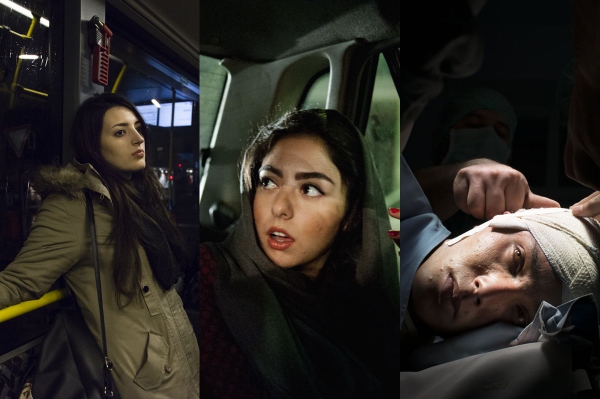
Resilience Trilogy (2010-17)
Iran, Afghanistan and Syria are three neighbouring countries with superficial similarities. All three countries, which are predominantly muslim with youth (under 35) accounting for more than 50% of the population, have experienced tumultuous recent histories, as a results of international intervention, economic struggles and barriers to progression as a result of socio-cultural norms.
The youth that make up the majority of these countries are those born between 1980 and 2000 - also referred to as ‘the millennials.’ Millennials across the region and similarly all over the world share similar characteristics and attitudes to their lives, politics and futures of their country. They are renowned for their resilience and optimism and are not behind sharing their voices through the use of internet and social media, ensuring the marginalised and vulnerable are not left behind. Another common pattern among these individuals is their adherence to freedom of speech and choice, ensuring they are not entangled with their cultural and religious beliefs. Attempting to accurate represent these realities, the youth in my photographs have strived to push through cultural and political boundaries and live a life other than what has been dictated to them by limiting culture or oppressive governments.
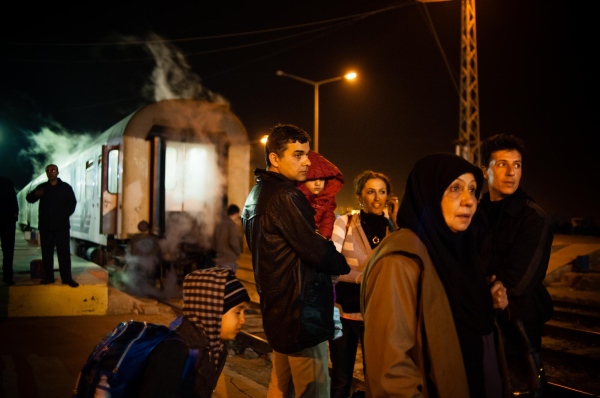
"The TransAsia Train" for Polka Magazine (2013)
With very few exceptions, almost all of the passengers were either asylum seekers or families of those who had previously escaped the country. Some fearful for the life and others simply searching for a better time ahead. A few knew how they wanted to proceed upon arrival in Turkey and others were clueless of what was awaiting them. Some families entirely packed their life in small suitcases and others left it behind, hoping that one day, they'll be able to return to Iran.
Besides from tears, laugh and food they shared on this journey, only one other thing linked a political activist, a mom, a student, a lesbian and a baha'i family; hope for a better future. (2013)
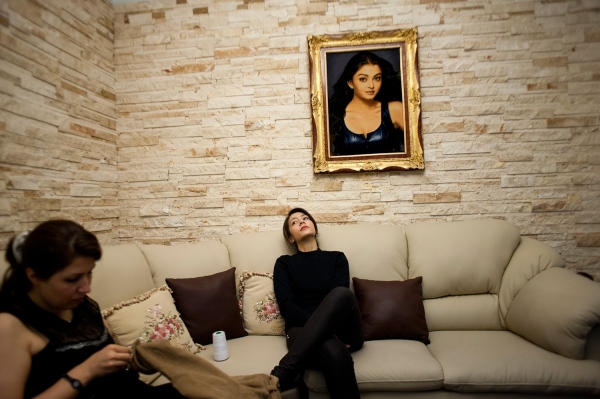
"May god be with you my daughter..." (2010-12)
In light of economic crisis and ongoing political oppression, the current wave of immigration out of Iran is now greater than at any point in history. There are no official numbers, but many Iranians have already left or are seeking a way out. Some pursue escape without even considering its consequences.
‘May god be with you my daughter…’ is the story of my own migration through the lives of other Iranian teenage girls who have taken the same path that I took years ago. Parmida,Parastou, Melika and Soheila, all immigrated in middle of their teenage years. Parmida and Soheila started this journey along with their parents and families, Parastou and Melika moved away on their own. Facing the battle of fitting into the new culture of their adopted home, this story captures the transformation and liberation of these girls at the age of 17. With the adult personality shaping up, an insecurity and self-consciousness now replaces the carefree world that the girls had lived in so far.
This passage from girlhood into adulthood, with all the complications it entails, takes place within a new culture and environment. The girls on the edge between two worlds try to come to terms with this transitional time in their lives and adjust to the people they are becoming. (Iran, Australia, Canada and United States)
https://lens.blogs.nytimes.com/2013/05/28/leaving-iran-and-restraints-behind/